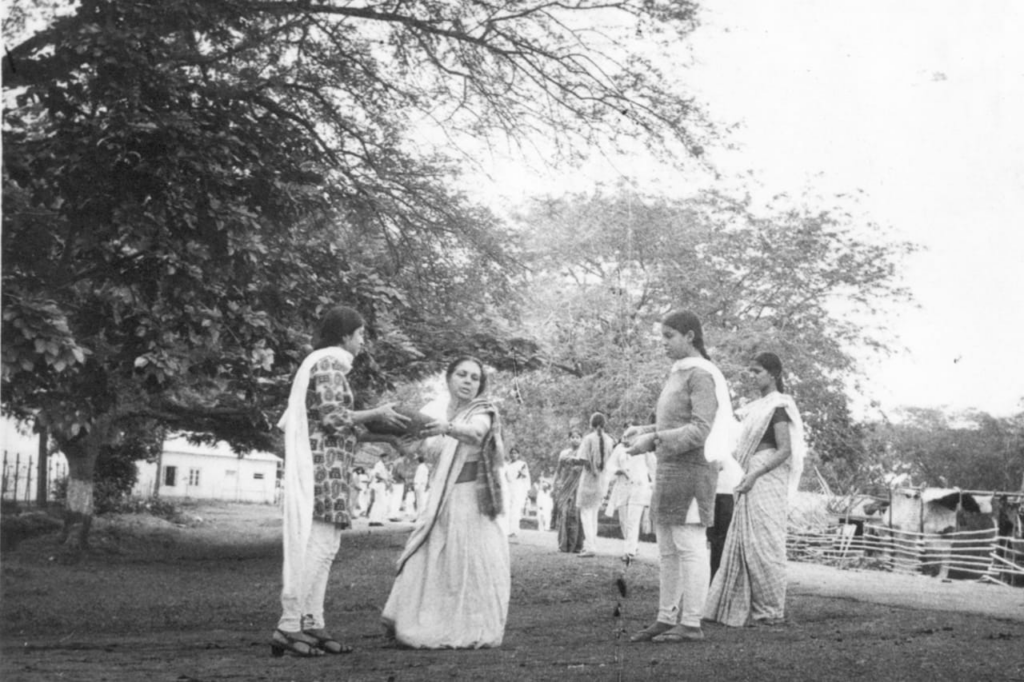Sevagram, 1970. Dr. Sushila Nayar, 𝘉𝘢𝘥𝘪 𝘉𝘦𝘩𝘦𝘯𝘫𝘪, stands among medical students, passing a basket of waste from hand to hand. This was 𝘴𝘩𝘳𝘢𝘮𝘥𝘢𝘢𝘯. Not an occasional gesture, but a way of life on campus.
She arrived in Sevagram in 1938, fresh from Lady Hardinge, to treat Gandhiji’s high blood pressure. But what she truly learned here was the art of preventive and social medicine. And the dignity of labour.

When cholera and typhoid struck the villages, she didn’t just prescribe medicines. She walked from home to home, teaching people the power of cleanliness, sanitation, and hygiene. For her, the fight against disease began not with pills, but with a broom, a spade, and willing hands.
Her conviction in preventive and social medicine was so deep that she founded Sevagram’s department of community medicine.
In this black-and-white photograph, one can almost hear the echo of 𝘕𝘢𝘺𝘢 𝘋𝘢𝘶𝘳 (1957):
“साथी हाथ बढ़ाना, एक अकेला थक जाएगा, मिलकर बोझ उठाना…”
This was Sevagram in the seventies. Straight out of a monochrome Hindi classic.